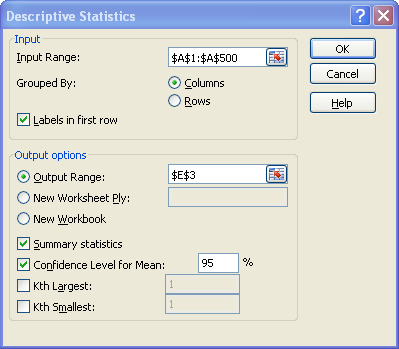

The formula we used was: While calculating MODE for the above range, the function ignored Logical values and gave the results below: In the above example, as the data given in column A show two statistical modes (1 and 2. Statistical analysis allows you to find patterns, trends and probabilities within your data. Suppose we are given the following data: In this case, there are two modes and logical values in the dataset. The mean suggests that the data is the same for all three wards, however the graph. The LOS for all three wards is illustrated on the graph below. Use this formula to calculate correct mean in excel.Learn.

They are all easy to use, so choose the one that’s right for your type of data and the questions you want to answer. However, the mean is not always the best measure of central tendency. The AVERAGE function is used to calculate mean in excel, but its not always returns the correct mean. The three main methods of finding the average within Excel are the AVERAGE (mean), MEDIAN (middle), and MODE (frequency). In other words, AVERAGEIFS will not include empty cells in the average. If you use Microsoft Excel on a regular basis, odds are you work with numbers. If the same formula were used to calculate the means for wards 2 and 3, you will find that for each ward, the mean LOS is 5 days. As a result, the syntax used to construct criteria is different, and AVERAGEIFS requires a cell range for range arguments – you can't use an array.ĪVERAGEIFS will automatically ignore empty cells, even when criteria match. Maybe you worked on it for hours, finally giving up because the data output was wrong or, the function was too complicated, and it seemed more straightforward to count the data yourself manually. Criteria can also include wildcards for partial matching.ĪVERAGEIFS is in a group of eight functions in Excel that split logical criteria into two parts ( range + criteria). If you’ve ever used Excel, then you’ve probably experienced the agony of choosing an incorrect formula to analyze a data set. For example, valid criteria could be 10, ">10", A1, or "<"&A1. The criteria given to AVERAGEIFS are applied with AND logic – all criteria must be true for a number to be included in the average.Ĭriteria can be supplied as numbers, strings, or references.

For each additional criteria, supply another range/ criteria pair. In this guide, I have explained how you can calculate the lower and upper CIs of the mean by using Excel. To calculate the upper 95 CI, repeat the same process but this time add the values together. The AVERAGEIFS function calculates the average of the numbers in a range that meet supplied criteria. The first range given to AVERAGEIFS is the range containing numbers to average. Criteria are supplied in pairs and only the first pair is required. By using the data in the example, the formula entered would be ‘B3-B16‘.


 0 kommentar(er)
0 kommentar(er)
